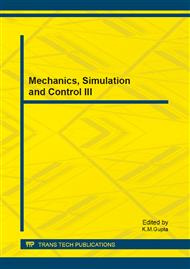p.68
p.73
p.78
p.84
p.90
p.96
p.101
p.106
p.113
Parametric Studies on Weld Penetration on Plate of Aluminium Alloy 6061-T6 Using FEM Simulation
Abstract:
Tremendous efforts were made in the last couple of decades showing remarkable development in new welding technologies for defect free structures capable of excellent in-service thermal and structural load bearing features. The weld penetration plays an important role in weld induced imperfections and transient temperature distributions followed by transient and residual stress fields. This paper therefore, presents the investigation on the finite element analysis using COMSOL Multiphysics and MATLAB with moving heat sources, temperature dependent material properties, and transient heat transfer and the experimental study by thermogrphy method to the analysis of arc welded plates of Al.alloy 6061-T6 and shows a good co-relation and also close agreement to the previously published literature for temperature distribution. The effect of process parameters viz., welding speed, arc current and standoff distance on weld penetration also has been studied.
Info:
Periodical:
Pages:
90-95
Citation:
Online since:
August 2013
Authors:
Keywords:
Price:
Сopyright:
© 2013 Trans Tech Publications Ltd. All Rights Reserved
Share:
Citation:


